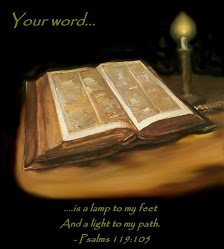
Moriel Ministries Be Alert! has added this Blog as a resource for further information, links and research to help keep you above the global deception blinding the world and most of the church in these last days. Jesus our Messiah is indeed coming soon and this should only be cause for joy unless you have not surrendered to Him. Today is the day for salvation! For He is our God, and we are the people of His pasture and the sheep of His hand. Today, if you would hear His voice, - Psalms 95:7
Saturday, August 09, 2008
Church challenges in Kosovo, Montenegro
Briefing on the present-day challenges for the Orthodox Churches in Kosovo and Montenegro.
SERBIANNA - By Ioannis Michaletos - April 13, 2008
The Christian Orthodox Churches in the Balkans draw their heritage from the Eastern Roman Empire (Byzantine) since the early middle ages. The following centuries, autocephalous Patriarchies were established in Serbia, Bulgaria and Romania amid serious conflicts between different actors motivated by political, national or even social motives.
Currently Orthodoxy in the Western Balkan region faces tremendous challenges due to the unstable political climate and the intrusion of foreign elements seeking to exploit the situation.
Kosovo
The Kosovo Eparchy as it has been numerously debated became a hotbed for Islamic activism since the mid 90’s when the first Mujahedins arrived in Northern Albania and established training camps in order to assist in the rebellion of the Kosovo Albanians. The post-1999 period witnessed the destruction of a large part of the 1,000 year old Serbian-Orthodox tradition, widely known as “Cultural genocide”. The main aim was to eradicate sites that connect this land with the Serbian nation and in a greater scale, with the Christian Orthodox tradition.
Apart from the above it is interesting to note, that other religious groups tried to intervene for their own benefit and establish a stronghold in Kosovo. The Baptists during the past 15 years actively supported the Kosovo’s Muslim majority, in order to gain access to the region assuming it could lead to a mass conversion of Muslims to this particular Christian faith. The results were not satisfactory, since only one Church was established with very few followers, most probably not more than 80-100. Despite continuous volunteer ventures to Kosovo organized by mainly Baptist groups in Texas; the Kosovo Albanians remained largely aloof.
The Roman Catholic Church is the denomination of roughly 5% of Kosovo’s Albanians and witnessed great difficulties in the first years since 1999. Actually their numbers might be as much as 2% if one counts the ones permanently living abroad.
According to an OSCE report “Catholic Albanians have faced continued intimidation and harassment...A common feature of many attacks was the underlying intention to force minorities to leave and/or to ensure their silence through fear.”
The situation has changed recently and a new Cathedral was established in Pristina that will be complete within the next few years. The Vatican progressively wants to recapture lost ground and in parallel accommodate further Albanian Catholic’s posture in the life of the Province. As it is the case in many regions in the world; the Catholic Church will assist its followers acquire elevated positions in the social and political life in Pristina a task being made rather easy since the declaration of independence leaves Pristina dependent of European help in which the Catholic Church still has very strong voice.
A recent development saw the involvement of anti-abortion groups, such as: Convention on the Rights of the Child, and the International Covenant on Civil and Political Rights and its Protocols. They are influenced by Evangelical American groups and they protested against the introduction of abortion rights in the so-called “Kosovo constitution”. A representation of these organizations traveled to Pristina and their tasks might possibly include the creation of religious nucleus of relative denominations in a region that is greatly inflicted by poverty, corruption and criminality, and is eager to attract Western support. It is likely that the influence of Protestant groups will increase in the coming years and that might lead to a conflict with the Catholic Church and the Muslim majority.
Montenegro
The current Archbishop of Montenegro, Amfilohije Radovic, considers the opponent Montenegro Orthodox Church heretical and schismatic. The latter was formed in 1993 and has not achieved a legal recognition by the Orthodox Churches and the Ecumenical Patriarchy. The main reason for the creation of MOC is to deconstruct the deep Serbian-Montenegrian bond thus achieving a permanent division between the two lands. The Metropolitanate of Montenegro and the Littoral is an integral Diocese of the Patriarchy in Belgrade, and maintains strong links with the Greek Church in Athens and the Ecumenical Patriarch in Constantinople. It is also safe to estimate that it has the backing of other Orthodox powers, namely Romania and Russia, thus his position is solid for the long-term.
Another aspect of the turbulent development in Montenegro is the indirect involvement of the Catholic Church and the Knights of Malta.
According to reliable local sources, the Montenegrin authorities and the unrecognized church (MOC) led by Miraš Dedeic plan to seize three of the greatest Christian relics - the right hand of St. John the Baptist, pieces of the True Cross, and the icon ("Filernosa") painted by the Holy Apostle Luke.
Two of the three relics are currently at the Cetinje monastery, while "Filernosa'' is at the State Museum in Cetinje. As the newspaper Kurir had discovered in early 2007, the Montenegrin government is under pressure by the Malta Knights.
It is calculated that the relic will first relocate to the Holy Trinity Church by Miraš's followers, and then turned over to the Knights of Malta, a powerful order which had lobbied for the independence of this new country.
"Metropolitan of Montenegro Amfilohije Radovic has written a letter notifying Prince Aleksandar Karadjordjevic of the intentions of Montenegrin authorities," says a Kurir source close to the Serbian Orthodox Church, "since the royals deposited the relics in Montenegro in 1941, while trying to escape the German occupation. In the letter to the Serbian prince, Amfilohije warned that the Knights of Malta desire the relics greatly, and asked that the royals publicly request the return of the relics to Belgrade."
The Knights of Malta are major financiers of MOC and have already tried to seize the relics once. Montenegro's president Milo Djukanovic and the Knights of Malta had a plan to take the relics out of the country in early 2006, but were thwarted by a media campaign organized by the pro-Serb opposition.
The relics were the reason Djukanovic had a clandestine meeting with Pope Benedict XVI at the Vatican in late 2005. Bypassing the normal diplomatic protocols, the then Serbian-Montenegrian Union Embassy and the Montenegrin consulate, the audience was arranged by Anton Zbutega of Kotor, a Maltese Knight.
The priceless icon "Our Lady of Filerno", known as "Filernosa" is said to have been painted by Apostle Luke almost two thousand years ago.
History records that it was brought to Malta by the Hospitallers in the 16th century, and that it stayed there till 1789, when it arrived at the Russian court. There the old metal frame was replaced with gold, and the frame was bedecked with precious jewels. Some 270 diamonds were arranged in a double row around the halo, with rubies and brilliants in between.
After the October Revolution, the icon was moved to Denmark, then spent a short time at an Orthodox church in Berlin, and finally came to the Karadjordjevic court in Belgrade. It was moved to Montenegro at the start of World War Two, and has been at the National Museum of Montenegro since 1978
Like "Filermosa" the right hand of St. John has had an interesting historical odyssey, from Jerusalem to Constantinople, Malta, St. Petersburg, and then via Denmark and Berlin to Belgrade.
At the outset of World War Two, King Petar II left Belgrade with the government, carrying the two relics and pieces of the True Cross They were turned over to Patriarch Gavrilo at Ostrog monastery, in the night between April 14-15 1941. Archimandrite Leontije of Ostrog guarded the relics well, and they remained unnoticed until 1952, when Communist authorities found them under the false floor in the Archimandrite's room while searching for the remaining royal gold. The relics were brought to the secret police vault in Podgorica, and kept there till 1978. That year, the Hand of St. John and the pieces of the True Cross were turned over to the Cetinje monastery, while the icon was transferred to the National Museum in Cetinje.
The importance of the aforementioned culminations is the existence of a behind-the-scenes religious drive primarily by the Catholic Church in Montenegro-Kosovo and the political developments that might occur because of this. It is certain that religion will play a future role in the Western Balkan scene and will lead to power shifts. For the moment the regional experts and analysts should be aware that apart from the political, economic and security intelligence; the religious one is as equally important when one wants to acquire a deeper understanding of the balances and developments in this part of the earth.
NOTE: The relics had always a significant value and the one who acquires can use them for greater political ends. It is interesting for the reader to enquire around the fate of relics and antiquities after the end of every recent war. In a few words it is not a matter of mere prestige but a subtle trial to invest on the subconscious of a nation, for the long-term and alter the historical traditions and the hierography.
Main sources:
www.christiantoday.com/.../4215.htm
http://kosovo.birn.eu.com/en/1/70/4101/
www.savekosovo.org/default.asp?p=9&leader=0&sp=78
http://www.freerepublic.com/focus/f-news/1976371/posts
www.ce-review.org/01/2/pozun2.html
www.esiweb.org/index.php?lang=en&id=274
www.predsjednik.cg.yu/print.php?id=930&jezik=0
http://www.newmontenegro.eu/cultura/icona-madonna-filermosa.aspx
Original Report Here
http://www.serbianna.com/columns/michaletos/032.shtml
FAIR USE NOTICE: This blog contains copyrighted material the use of which has not always been specifically authorized by the copyright owner. We are making such material available in our efforts to advance understanding of religious, environmental, political, human rights, economic, democracy, scientific, and social justice issues, etc. We believe this constitutes a 'fair use' of any such copyrighted material as provided for in section 107 of the US Copyright Law. In accordance with Title 17 U.S.C. Section 107, the material on this site is distributed without profit to those who have expressed a prior interest in receiving the included information for research and educational purposes. For more information go to: http://www.law.cornell.edu/uscode/17/107.shtml. If you wish to use copyrighted material from this site for purposes of your own that go beyond 'fair use', you must obtain permission from the copyright owner.






